Victory in any war is forged not only by weapons, but also by propaganda. Hakko ichiu ("eight corners of the world under one roof") was the political motto of Japan in the 30s and 40s. This is how the Land of the Rising Sun justified its aggression against other peoples in the struggle for world domination. And every propaganda machine goes thanks to gasoline from human lives.
Heroes are invariably needed in war. From this issue you will learn how an accidental explosion became a fertile topic for propaganda myth-making, how "three live bombs" became national heroes, got into school textbooks and even turned into chocolate, a woman's hairstyle and figurines.
(7 photos in total)
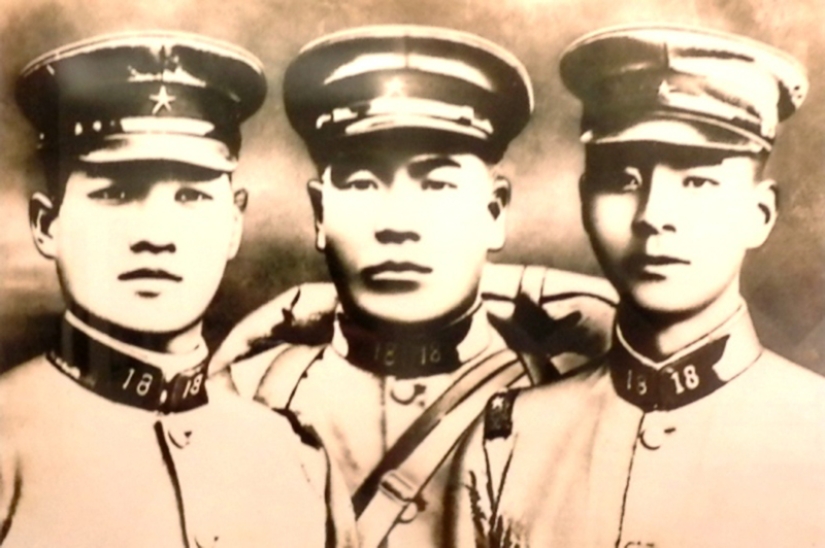
Source: LiveJournal/foto-history
On February 22, 1937, the Japanese army attacked Chinese fortifications north of Shanghai at a place called Miaohanzhen. The Chinese were well entrenched there, and their barbed wire fences were a serious obstacle for the Japanese infantry. At 5:30 a.m., privates 1st Class Takeji Eshita, Susumu Kitagawa and Inosuke Sakue, who served in the sapper battalion, were sent to undermine the wire fortifications. They were carrying a Bangalore torpedo — a three-meter bamboo tube filled with explosives.
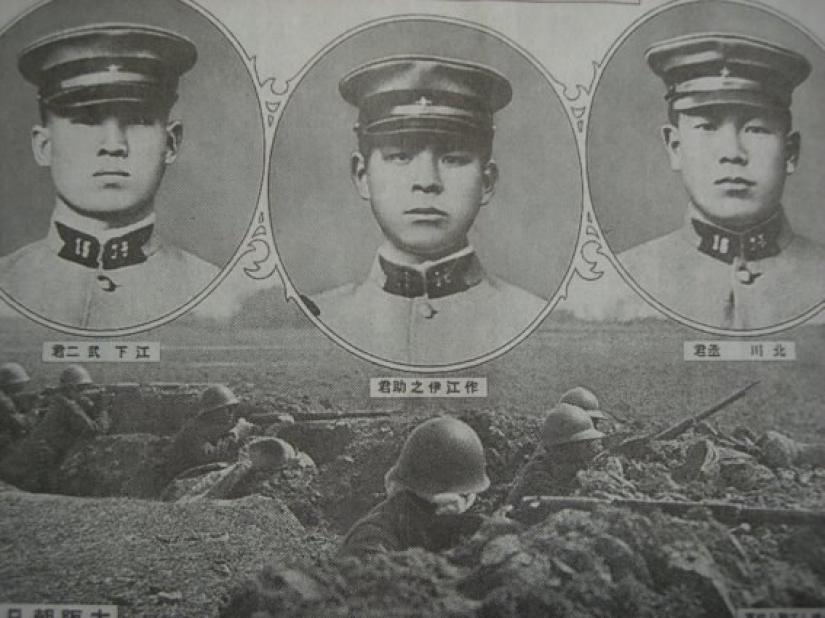
All three exploded together with the torpedo and died, but the goal — to make a hole in the Chinese fortifications — was achieved. In this seemingly insignificant episode, the army leadership saw huge opportunities for propaganda, so on February 24, the news about the three sappers appeared on the front pages of newspapers. According to the official version, the fighters deliberately sacrificed themselves for the sake of destroying the barriers.
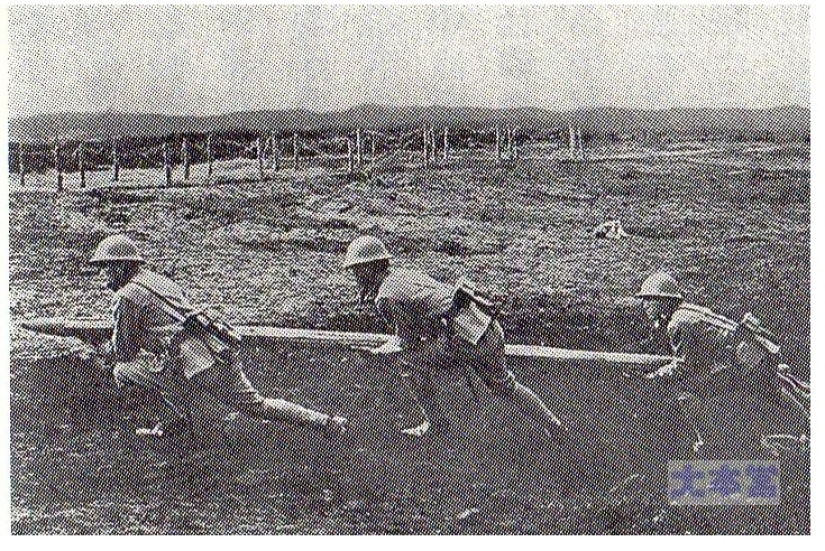
They allegedly ran to the Chinese fortifications with the torpedo fuse cord set on fire in advance, realizing that they would not have enough time to set it on fire if they brought the torpedo closer to the barrier. The press praised the newly-born heroes in every way: their feat, as the newspapers wrote, surpassed the exploits of Captain Hirose and Lieutenant Colonel Tachibana. The Minister of the Army Sadao Araki personally took part in the "canonization" of the sappers.
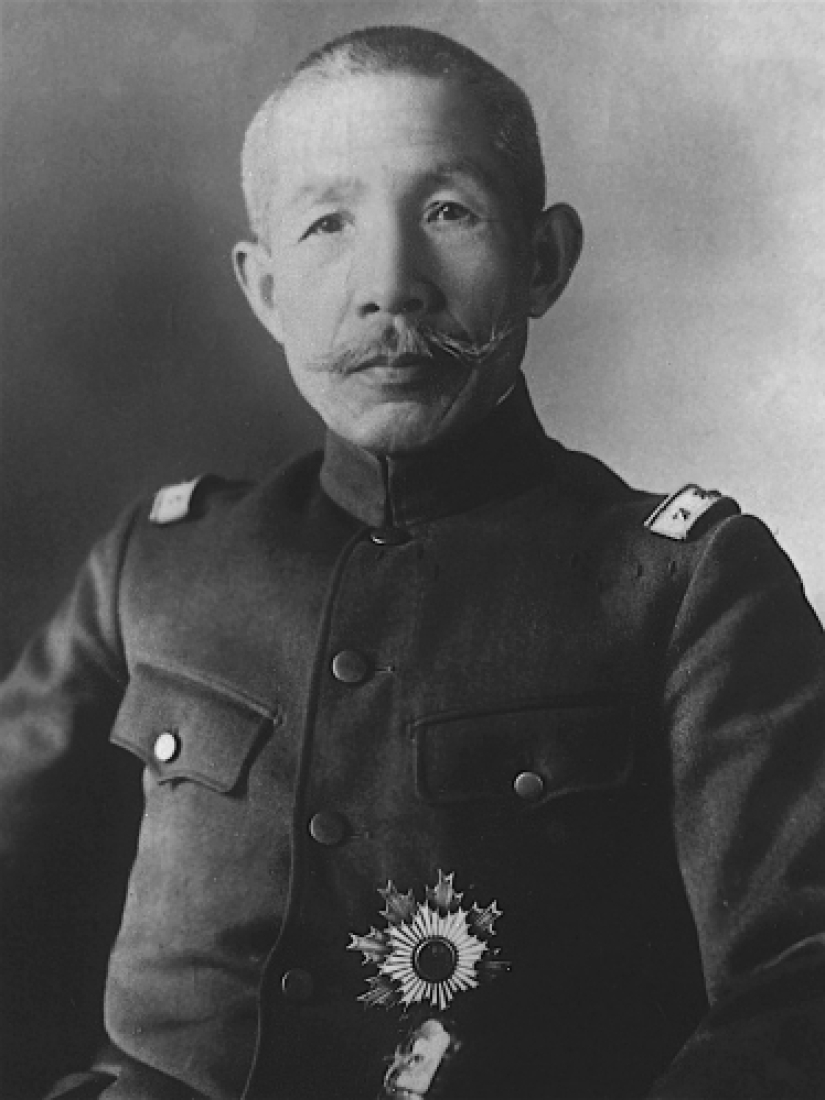
The newspaper "Asahi Shimbun", the first to publish the news about the sappers, began collecting money for the families of the victims. On the very first day, one patriot donated a huge sum of 1,000 yen (the average income of a family of four was 82 yen per month in those years). When the collection was completed, there was enough money not only for the parents of the sappers, who received 10,000 yen each, but also for the installation of a bronze statue in honor of Esita, Kitagawa and Sakue, which took 20,000 yen. All three were posthumously promoted to the rank of corporals and awarded each the Order of the Golden Kite of the 6th degree.
Six film companies immediately after the first newspaper publications appeared announced their intention to make films about three heroes, and in March all six films were ready. Traditional arts did not lag behind either: three heroic live bombs were included in Rakugo's monologues, plays about sappers were performed in Kabuki, Simpa, bunraku and dzeruri theaters, often accompanied by excerpts from plays about forty-seven Ronin and thus continuing the glorious tradition of stories about loyal vassals. Radio dramas were hastily created, books were written, manga was drawn.
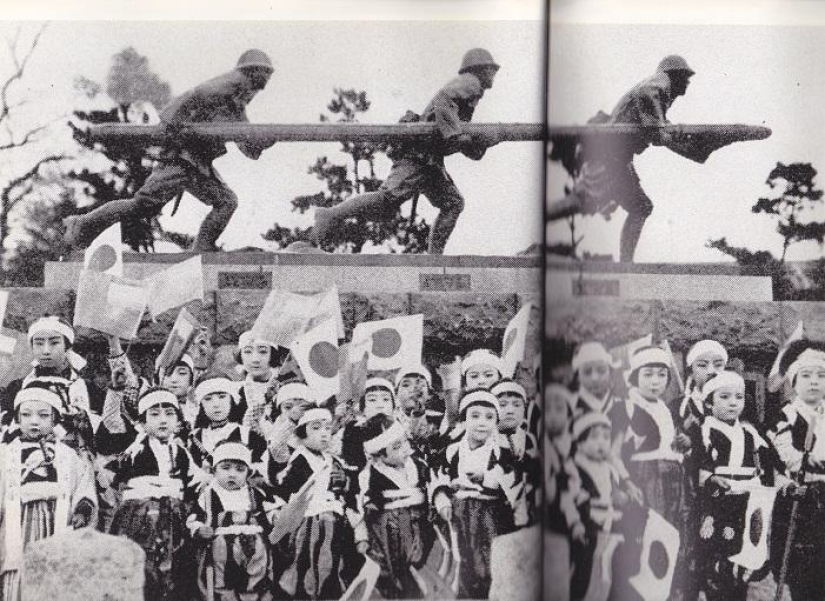
The monthly magazine "Boys Club" (少年倶楽部 Se:nan kurabu) placed in the March issue a huge four-page poster depicting three heroes with a torpedo, and more than a million young readers hung this poster over their bed. On the streets, boys played heroic sappers, running in threes with a "torpedo", the role of which was performed by a log, to "fortifications" defended by "enemy soldiers". The influence of the legend turned out to be so great that the description of the feat of Esita, Kitagawa and Sakue was included in school textbooks.

The popularity of the three heroes was also realized by businessmen who are not related to the media sphere. "Three Heroic Live Bombs" have become a trademark for the most unexpected things. There was a female hairstyle "Sanyusi-mage" ("hairstyle of three heroes"), chocolate "Live bombs", caramel "Live shells" and rice cookies "Three heroes".

Patriotic excitement sometimes turned into a tragicomedy. In Osaka, a 24-year-old worker, impressed by the feat of three sappers, asked to volunteer for the Chinese front, was refused and out of desperation tried to jump off the roof. In Gifu Prefecture, a 19-year-old girl drowned herself in a pond, leaving a suicide note to her two brothers with the words: "With tears of reverence, I follow the path of the three heroes and I beg you to do the same, serving the motherland to the last drop of blood." In Hokkaido, two elementary school teachers who were preparing a scene about the feat of "live bombs" were injured: they, like real prototypes, had gunpowder stuffed into a bamboo tube exploded at the wrong time.
Keywords: 30th | Propaganda | Japan
Recent articles

Previously, the principle of "an eye for an eye, a tooth for a tooth" was an integral part of many cultures. But in our days there ...

Near the Italian town of Saturnia is a fabulously beautiful place, where geothermal springs form a warm waterfall Cascate del ...
Related articles

In a cardboard box, everyone sees something different. Some use it as a storage container, for cats it is a great house, and ...

Every country in the world is associated with a certain smell. India is remembered by the aroma of spices, France-the smell of ...

The works of this artist look airy and light, like a faint breeze in the first rays of the sun. To work, she does not need anything ...

It happens that the loss of a national team leads to the most tragic consequences not only for fans, but also for the athletes ...